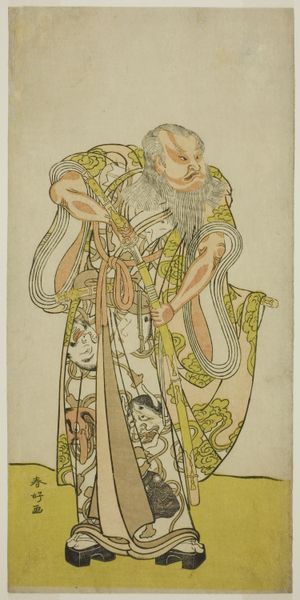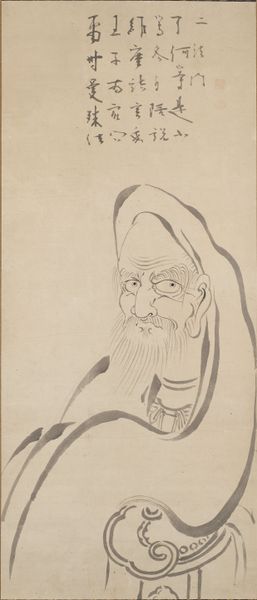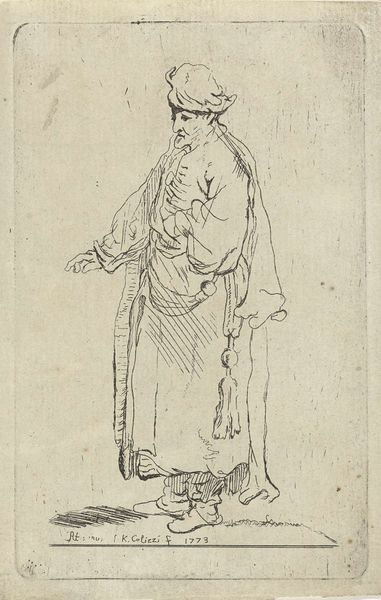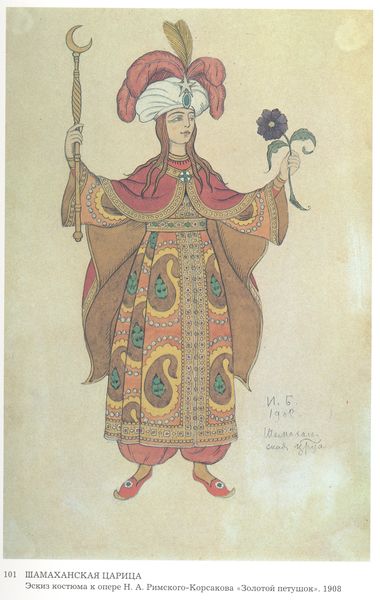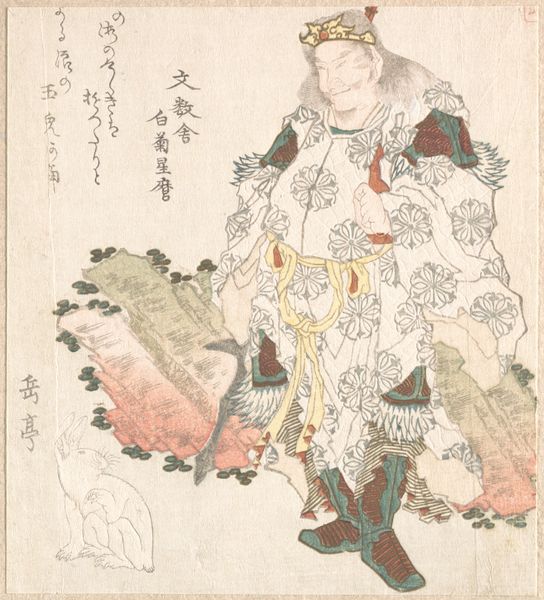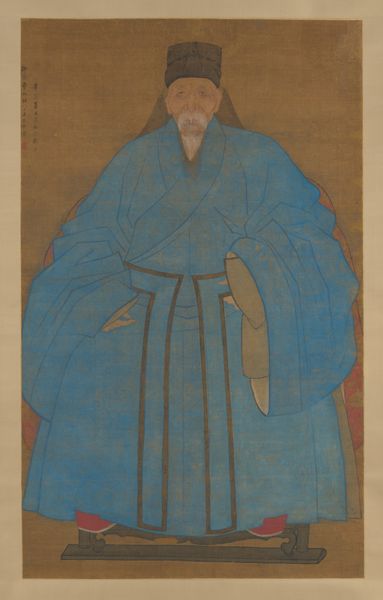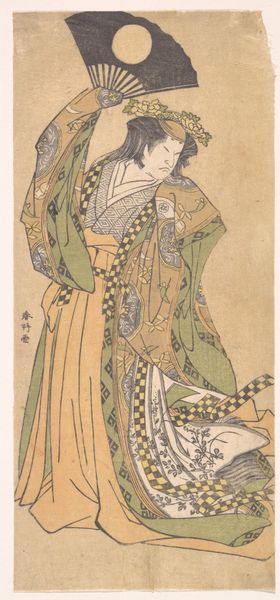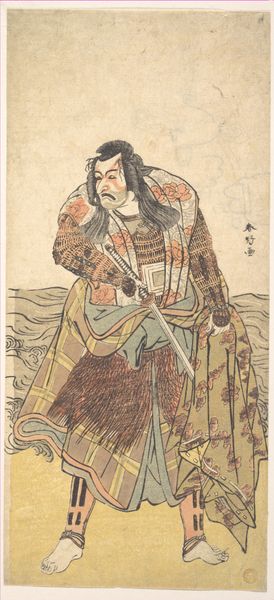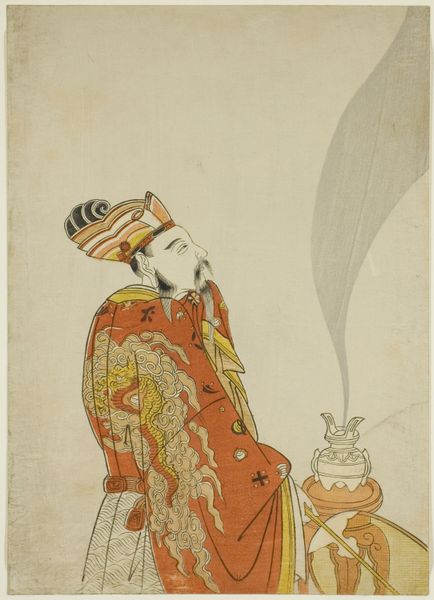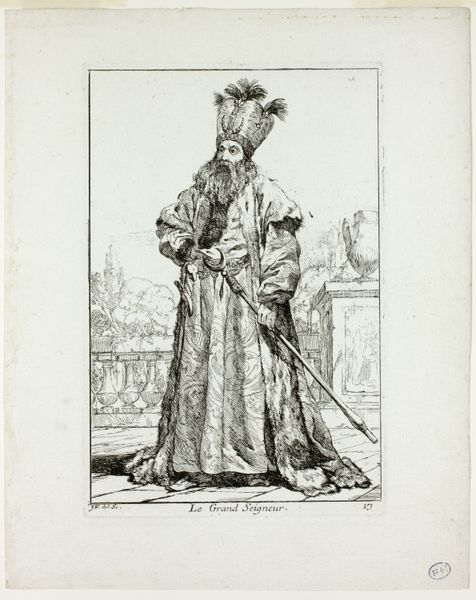
#
sky
#
toned paper
#
pastel soft colours
#
head
#
fashion and textile design
#
historical fashion
#
ink drawing experimentation
#
traditional art medium
#
costume
#
mythology
#
watercolour bleed
#
watercolour illustration
#
fashion sketch
#
watercolor
Copyright: Public domain
Editor: Here we have Ivan Bilibin’s “Sketch for the Opera, The Golden Cockerel, by Nikolai Rimsky-Korsakov,” created in 1908. The figure’s ornate costume feels almost stifling. What can you tell me about the context of this design? Curator: Bilibin’s costume design reveals a fascinating interplay between art and political commentary within the cultural landscape of early 20th-century Russia. “The Golden Cockerel” faced censorship due to its satirical portrayal of autocratic rule, and this context profoundly influenced both the opera's reception and the visual elements Bilibin conceived. Notice how the character's extravagant attire, while visually captivating, arguably represents a mask, hinting at the opera's critique of superficial power. Doesn't the excess seem almost absurd? Editor: I see what you mean. It's as if the weight of the power is shown through the elaborate clothing, but it also masks weakness, or perhaps incompetence? Curator: Exactly. Think about the role of theaters and opera houses during this period. They weren't just entertainment venues, but also vital public spaces where political sentiments could be subtly expressed and debated through artistic means. How do you think Bilibin's choices in costume design could amplify or subvert the opera's intended message for audiences of the time? Editor: It adds a layer of irony, then. On the one hand, the splendor attracts the audience. But then you think, maybe Bilibin critiques the elite class as ostentatious, out of touch, corrupt and in decline… And I guess you're right, maybe they needed this in a censored context to get the message through the higher-ups! Curator: Precisely! And the visual vocabulary Bilibin draws from – traditional Russian folk art combined with art nouveau – speaks volumes about his intention to create a distinctly national, yet progressive, aesthetic. By exploring these layers, we come to see this as more than just a costume design. It's a critical reflection on power, identity, and the social role of art. Editor: This conversation gave me new perspectives to reflect on. Now I'm seeing it as an instance of cultural commentary. Curator: It's a reminder that art can often operate as a powerful form of social dialogue and disruption.
Comments
No comments
Be the first to comment and join the conversation on the ultimate creative platform.
